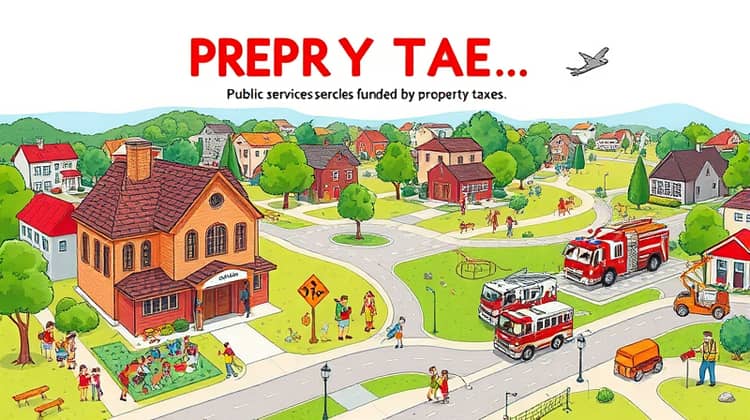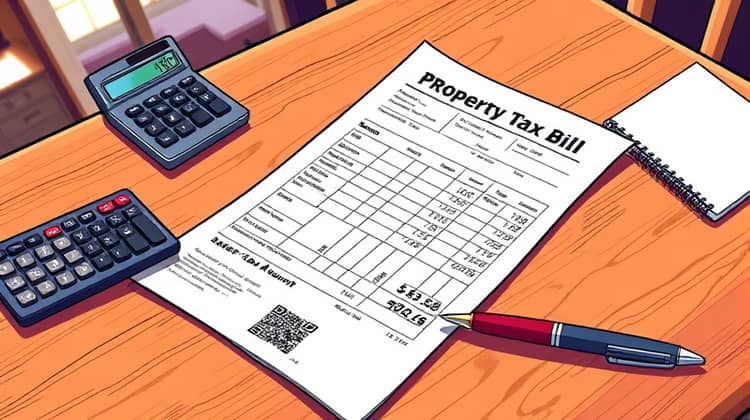Property taxes are an essential part of homeownership, but many homeowners approach them with confusion or anxiety. This guide aims to demystify property taxes, offering clarity on what they are, how they are calculated, and the implications for homeowners.
Understanding property taxes is crucial, not just for planning your budget, but for ensuring that you are not overpaying. Getting familiar with property tax assessments and rates can potentially save you a significant amount of money.
This article will explore the complexities of property taxes, revealing how they are assessed, utilized, and discussing strategies that can help you reduce your liability.
What Are Property Taxes?

Property taxes are levies imposed by local governments on real estate properties to fund various public services. They serve as a primary source of income for municipalities, counties, and school districts, enabling them to provide essential services to the community.
When you purchase a home, you become responsible for paying property taxes based on your home's assessed value. These taxes are typically paid annually or semi-annually and can vary significantly depending on where you live and the value of your property.
Property taxes are calculated and collected based on the valuation of your property, and different jurisdictions may have different methods of assessment, rates, and regulations.
How Property Taxes Are Calculated

Property taxes are calculated based on the assessed value of your property and the local tax rate. The assessed value is determined by local government tax assessors, who evaluate a plethora of factors, including property size, location, market conditions, and improvements made to the property.
- Determine the assessed value of your property.
- Check the local tax rate in your area.
- Multiply the assessed value by the tax rate to calculate your property tax obligation.
It’s important to keep an eye on both the assessed value and the local tax rate, as changes in either can significantly impact the amount of property taxes you owe.
The Role of Property Assessments

Property assessments are crucial to ensure that property taxes are fair and equitable. They are generally conducted by local government assessors who evaluate each property and determine its value based on set guidelines.
- Assessments are typically performed every few years, though some areas may assess properties annually.
- Homeowners can appeal their property assessments if they believe their property has been overvalued.
- The assessment process considers factors like property characteristics, sales data, and local market trends.
Understanding the assessment process can empower homeowners to ensure that their properties are not over-assessed, ultimately reducing their tax liabilities. It’s advisable for property owners to keep records of their property’s condition and improvements to support their case during the assessment reviews.
Keeping informed about the latest market trends and property values in your area also aids homeowners in evaluating whether their assessments are accurate.
How Property Taxes Are Used

Property taxes are utilized by local governments to fund a variety of critical services that benefit the community as a whole. These can range from essential services such as education and public safety to infrastructure development and maintenance.
Understanding the allocation of property taxes can provide insight into how your contributions impact your community.
- Public education funding.
- Infrastructure development and maintenance.
- Emergency services and public safety departments.,
- Public parks and recreation programs.
These areas reflect how property taxes play a fundamental role in enhancing the quality of life for residents and ensuring that necessary services are readily available.
Property Tax Rates and Methods of Collection

Property tax rates can vary greatly depending on the location. Understanding where your rates fall can help you plan your finances more effectively.
Local governments generally set these rates based on budgetary needs and property valuations.
- Ad valorem tax: based on property value.
- Flat tax: a fixed rate applied to all properties.
- Supplemental levies: additional taxes imposed for specific projects.
The collection of property taxes may occur through various means, including direct billing, escrow accounts associated with mortgage payments, and, in some cases, through special district assessments. Familiarizing yourself with these methods allows for better financial planning.
Understanding Your Property Tax Bill

Your property tax bill will typically itemize the charges, including the assessed value of your property, the applicable tax rates, and the total amount due. Understanding each component can prepare you for payment and help identify any discrepancies.
Homeowners should review their property tax bills carefully and understand the different sections, as errors can occur. If you notice any issues, it’s essential to address them promptly with your local tax authority.
How to Reduce Your Property Taxes

Many homeowners seek to reduce their property tax bills without sacrificing the services their communities provide. There are various strategies to achieve this, often requiring research and proactive measures.
Engaging in activities like appealing your property assessment or seeking exemptions can lead to significant savings.
- Review and contest your property assessment.
- Explore property tax exemptions for seniors or veterans.
- Participate in local meetings to advocate for fair tax policies.
By taking these steps, homeowners can better manage their tax burdens and make more informed decisions regarding their property investments.
Challenges and Changes in Property Tax

The landscape of property taxes is continually evolving due to factors such as changing economic conditions, population growth, and infrastructure needs. This presents both challenges and opportunities for homeowners and local governments alike.
Rising property values have led to increased taxes, while simultaneous budget shortfalls compel municipalities to reassess tax structures.
- Increasing resistance to higher tax rates from homeowners.
- Pressure on local governments to provide essential services despite budget constraints.
- Growing advocacy for tax reform and reassessment practices.
Staying informed about these changes can help homeowners prepare and advocate for their financial interests in the property tax system.
Conclusion

Understanding property taxes is essential for homeowners, enabling them to make informed financial decisions and actively engage with their local governments.
By grasping how property tax calculations are made, the purpose of assessments, and the overall tax structure, homeowners can navigate the complexities of property taxes more effectively.
This guide aims to empower homeowners to take control of their financial obligations and ensure they are contributing fairly to their communities while also exploring avenues for tax reductions.














